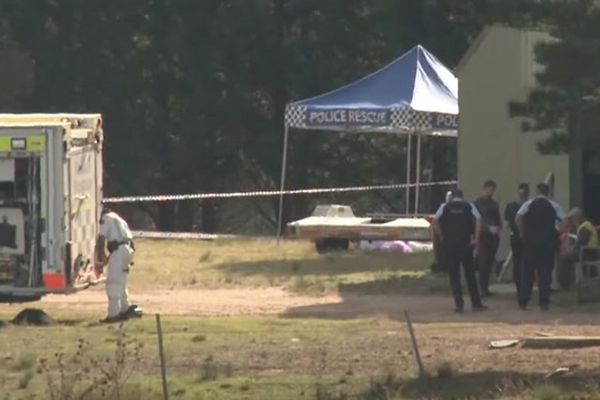
The Coalition is setting the stage for an election on major cuts to the federal public service as part of its crusade to wind back Labor’s changes and cut “waste” in a move mirroring the US administration’s war on government “inefficiency”.
Peter Dutton has yet to say where jobs will be cut but the opposition leader doubled down on the commitment at a press conference last week, saying: “I’ve been clear we’re not having 36,000 additional public servants in Canberra.”
In a speech in January, Dutton suggested that, if elected, those in diversity and inclusion positions, as well as “change managers” and “internal communication specialists”, were likely to lose their roles.
“Such positions, as I say, do nothing to improve the lives of everyday Australians,” he said.
Other opposition frontbenchers, including the Nationals leader, David Littleproud, have suggested that more than 30,000 roles could be slashed. He later suggested “hardly any” jobs would be cut but would instead be removed through “natural attrition”.
Labor has warned that the cuts could result in poorer services and an expensive bill on external consultants and labour hire.
So, what do the figures say?
How has the public service grown under the Albanese government?
The size of the public service is forecast to reach 209,150 in the 2024-25 financial year, according to average staffing level figures in the 2024-25 federal budget.
The sum, which excludes military and reserves, represents an increase of 17,000 more staff on the previous year and an extra 36,000 since the 2022 budget.
The actual number of employed public servants does not necessarily line up with the average staffing level – the latter is the forecast figure used by the government to determine how many are needed to deliver the budget measures. For national security reasons, it excludes the number of staff in intelligence agencies.
Using the Australian Public Service Commission’s latest figures, which calculate permanent and temporary APS staff, the figure for the 2023-24 financial year is 185,343. It represents an 8.9% increase on the previous year and an increase of 16.4%, or 26,000 places, since the 2021-22 financial year.
Whichever figure you use, the majority of those jobs have been in frontline roles in the National Disability Insurance Agency and Services Australia. New departments and agencies created by the Labor government, such as the climate change department and the Australian Submarine Agency, have also contributed to the growing bureaucracy.
An additional 8,816 roles formerly held by contractors, consultants and labour hire have also been converted to permanent staff, including 2,502 roles in the last budget.
What happened under the Coalition years?
When the former prime minister Tony Abbott took the reins of government in 2013 he promised to downsize the bureaucracy in the name of a “budget emergency”.
A so-called “hiring freeze” achieved through attrition reduced the average staffing level by almost 11,600 roles in Abbott’s two years as prime minister.
In the 2014 calendar year, contracts given to labour hire firms for personnel rose to $21.7bn from $9.9bn in 2013, according to Guardian Australia analysis of AusTender data. Similarly, the sum of consulting contracts rose to $418.4m in 2014 from $286.5m in 2013.
A ceiling on the number of public servants was introduced in the 2015-16 budget. The average staffing level cap, which excluded military and reserves, ensured the bureaucracy’s size was maintained at around or below 167,596 – equivalent to staffing levels in 2006-07.
The average yearly cost of consulting contracts between 2016 and 2022 was almost $600m, peaking in the 2021 calendar year at $751.1m.
Over that same period, the yearly cost of contracts handed to labour hire firms to temporary and ongoing staff fluctuated but averaged $23bn.
Labor, while in opposition, promised to scrap the staffing cap and increase the bureaucracy to reduce its reliance on outsourced labour.
While the cap has since been removed, the cost of consulting contracts has stayed well above pre-2014 levels.
In the 2022 calendar year, when Labor was elected to government, the total cost was reduced to $567.9m from its 2021 high. But the total increased to $596.1m in 2023 and $605.2m in 2024.
Labour hire contracts starting between 2022 and 2024 have averaged $42.5bn a year.
The public service minister, Katy Gallagher, has said returning the public service to its pre-2014 levels, in terms of both size and expertise, would “take time”.
Could the government return to consultants and labour hire?
Gallagher has warned the Coalition’s pledge to cut roles in Canberra and the regions would see the return of large consultancy and labour hire bills.
Jane Hume, the shadow public service minister, said last week that the Coalition would not rule out a Coalition government using external labour but claimed Labor’s warnings about billions more in consultancy contracts weren’t accurate.
“During Covid, of course, we wanted to see such capacity because there was an expectation that governments would respond quickly in very difficult circumstances,” she said.
“But now those public servants have been added to the mix, and they are permanent … this is a real concern, because, let’s face it, a bigger public service isn’t always a better public service.
“Consultants have been in the public sector for forever and a day, and there’s a reason for that, and that’s because you can’t expect the public sector to be experts at everything all the time.”
Until the opposition lays out the details its plan, which it has suggested will not come until after polling day, it remains unclear just what’s in store for the bureaucracy.







